Related Research Articles

Alain Connes is a French mathematician, known for his contributions to the study of operator algebras and noncommutative geometry. He is a professor at the Collège de France, Institut des Hautes Études Scientifiques, Ohio State University and Vanderbilt University. He was awarded the Fields Medal in 1982.

Blaise Pascal was a French mathematician, physicist, inventor, philosopher, and Catholic writer.
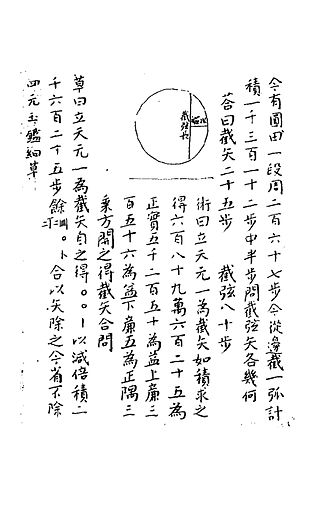
Zhu Shijie, courtesy name Hanqing (漢卿), pseudonym Songting (松庭), was a Chinese mathematician and writer during the Yuan Dynasty. Zhu was born close to today's Beijing. Two of his mathematical works have survived: Introduction to Computational Studies and Jade Mirror of the Four Unknowns.
In mathematics, Pascal's triangle is an infinite triangular array of the binomial coefficients which play a crucial role in probability theory, combinatorics, and algebra. In much of the Western world, it is named after the French mathematician Blaise Pascal, although other mathematicians studied it centuries before him in Persia, India, China, Germany, and Italy.
Connections between mathematics and God include the use of mathematics in arguments about the existence of God and about whether belief in God is beneficial.
The year 1664 in science and technology involved some significant events.
The year 1662 in science and technology involved some significant events.

Pierre Remond de Montmort was a French mathematician. He was born in Paris on 27 October 1678 and died there on 7 October 1719. His name was originally just Pierre Remond. His father pressured him to study law, but he rebelled and travelled to England and Germany, returning to France in 1699 when, upon receiving a large inheritance from his father, he bought an estate and took the name de Montmort. He was friendly with several other notable mathematicians, and especially Nicholas Bernoulli, who collaborated with him while visiting his estate. He was elected a fellow of the Royal Society in 1715, while traveling again to England, and became a member of the French Academy of Sciences in 1716.

Grégoire de Saint-Vincent - in Latin : Gregorius a Sancto Vincentio, in Dutch : Gregorius van St-Vincent - was a Flemish Jesuit and mathematician. He is remembered for his work on quadrature of the hyperbola.

Pierre de Fermat was a French mathematician who is given credit for early developments that led to infinitesimal calculus, including his technique of adequality. In particular, he is recognized for his discovery of an original method of finding the greatest and the smallest ordinates of curved lines, which is analogous to that of differential calculus, then unknown, and his research into number theory. He made notable contributions to analytic geometry, probability, and optics. He is best known for his Fermat's principle for light propagation and his Fermat's Last Theorem in number theory, which he described in a note at the margin of a copy of Diophantus' Arithmetica. He was also a lawyer at the parlement of Toulouse, France.
Joseph Sauveur was a French mathematician and physicist. He was a professor of mathematics and in 1696 became a member of the French Academy of Sciences.

Ghiyāth al-Dīn Jamshīd Masʿūd al-Kāshī was a Persian astronomer and mathematician during the reign of Tamerlane.

Moshe Ya'akov Vardi is an Israeli theoretical computer scientist. He is the Karen Ostrum George Distinguished Service Professor in Computational Engineering at Rice University, United States. and a faculty advisor for the Ken Kennedy Institute. His interests focus on applications of logic to computer science, including database theory, finite model theory, knowledge of multi-agent systems, computer-aided verification and reasoning, and teaching logic across the curriculum. He is an expert in model checking, constraint satisfaction and database theory, common knowledge (logic), and theoretical computer science.
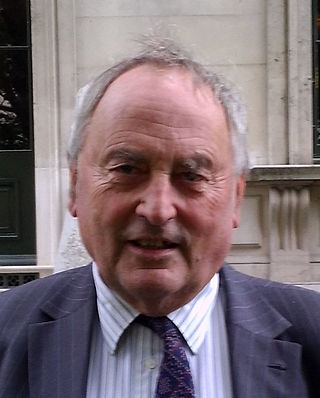
Donald Adamson,, was a British literary scholar and historian.
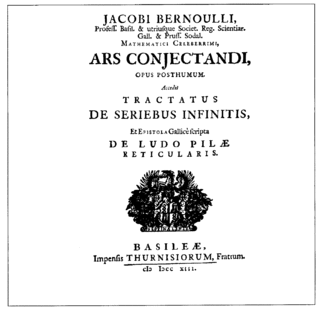
Ars Conjectandi is a book on combinatorics and mathematical probability written by Jacob Bernoulli and published in 1713, eight years after his death, by his nephew, Niklaus Bernoulli. The seminal work consolidated, apart from many combinatorial topics, many central ideas in probability theory, such as the very first version of the law of large numbers: indeed, it is widely regarded as the founding work of that subject. It also addressed problems that today are classified in the twelvefold way and added to the subjects; consequently, it has been dubbed an important historical landmark in not only probability but all combinatorics by a plethora of mathematical historians. The importance of this early work had a large impact on both contemporary and later mathematicians; for example, Abraham de Moivre.
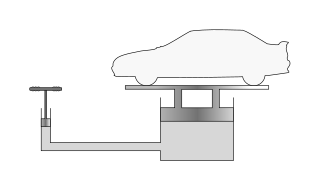
Pascal's law is a principle in fluid mechanics given by Blaise Pascal that states that a pressure change at any point in a confined incompressible fluid is transmitted throughout the fluid such that the same change occurs everywhere. The law was established by French mathematician Blaise Pascal in 1653 and published in 1663.
This is a timeline of philosophy in the 17th century.
Events from the year 1653 in France.

Stanislas de Castellane was a French politician, representing Cantal in parliament several times between 1902 and 1940.
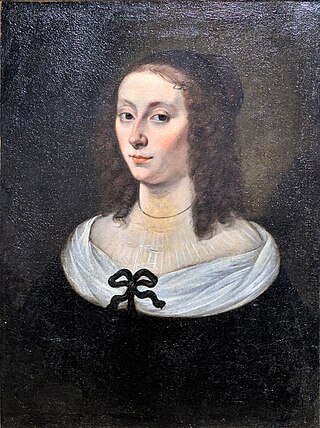
Françoise Gilberte Périer was a French biographer and the older sister of Blaise Pascal whose biography she wrote.
References
- ↑ "Ressources Éducatives Libres - data.abuledu.org | Les ressources libres du projet AbulÉdu". data.abuledu.org (in French). Retrieved 4 April 2018.
- ↑ McCleary, John (2017). Exercises in (Mathematical) Style. The Mathematical Association of America. p. 24. ISBN 9780883856529.
- ↑ "Blaise Pascal". web.csulb.edu. Retrieved 4 April 2018.
- ↑ Drüll, Dagmar (2013). Heidelberger Gelehrtenlexikon: 1652–1802 (in German). Springer-Verlag. p. 14. ISBN 9783642762963.
- ↑ Robert, Maxham; Joseph, Sauveur (1976). "The contributions of Joseph Sauveur (1653-1716) to acoustics". UR research - University of Rochester. Retrieved 5 April 2018.
- ↑ Bjarnadóttir, Kristín; Furinghetti, Fulvia; Menghini, Marta; Prytz, Johan; Schubring, Gert (2017). "Dig where you stand" 4: Proceedings of the fourth international conference on the History of Mathematics Education. Edizioni Nuova Cultura. p. 179. ISBN 9788868128630.